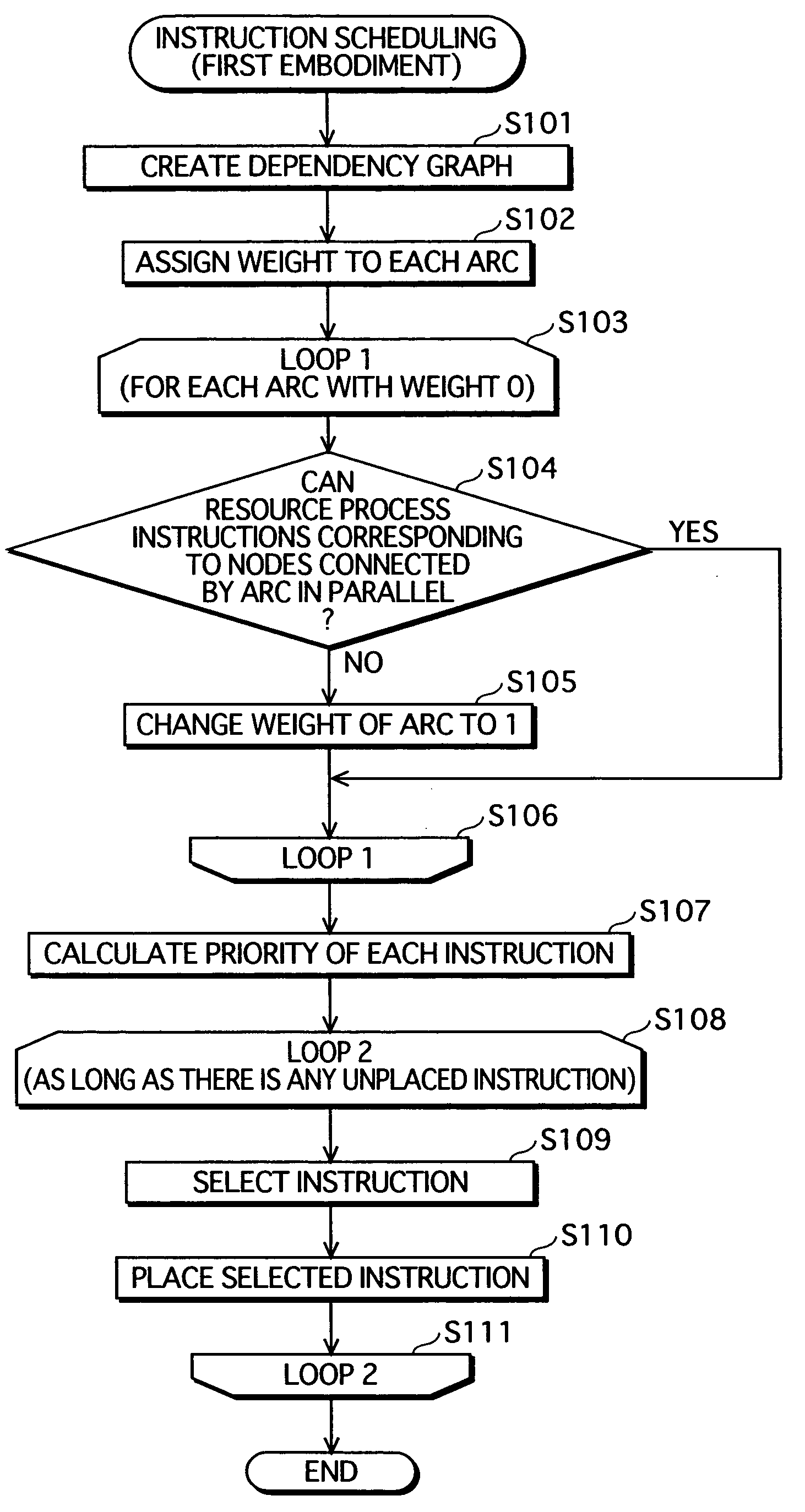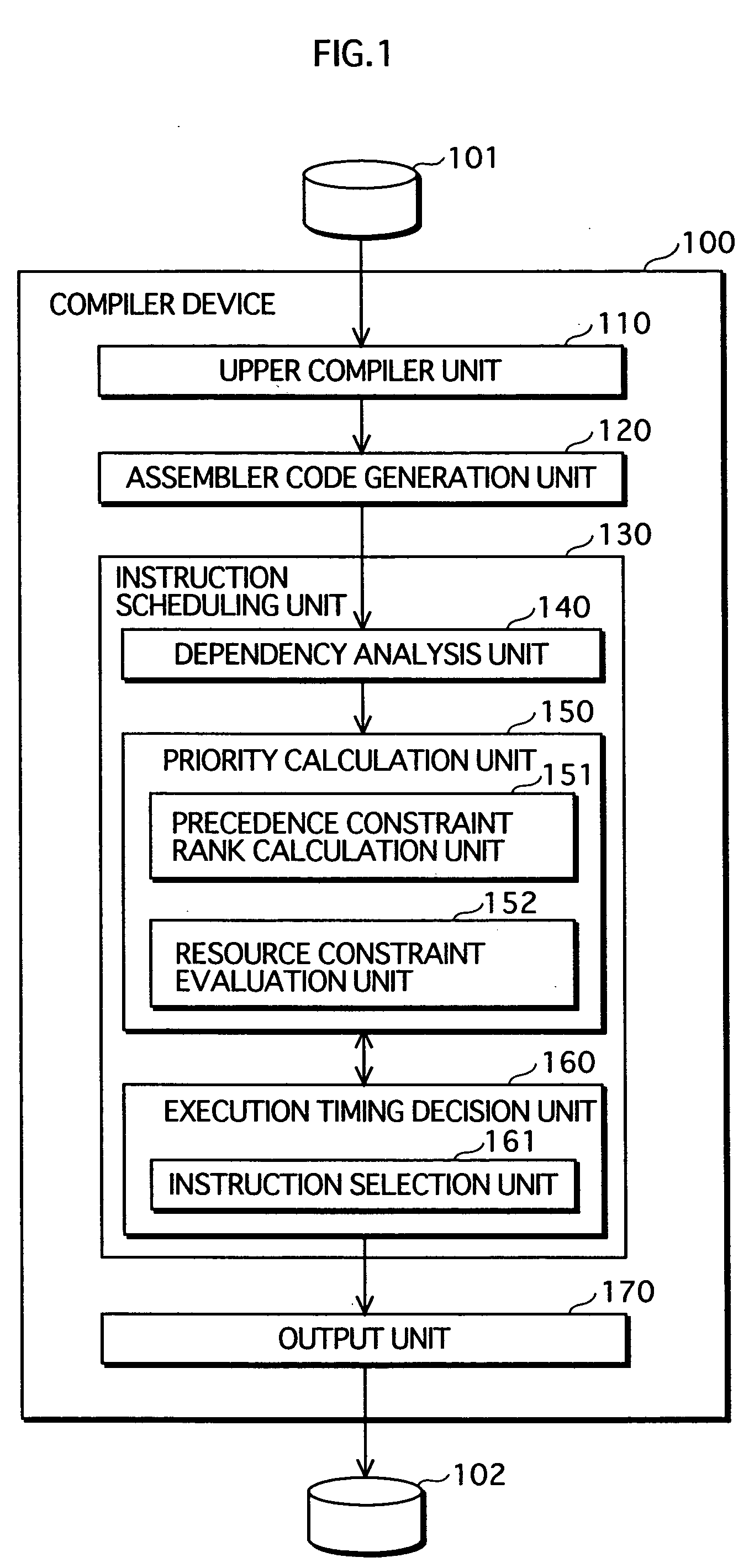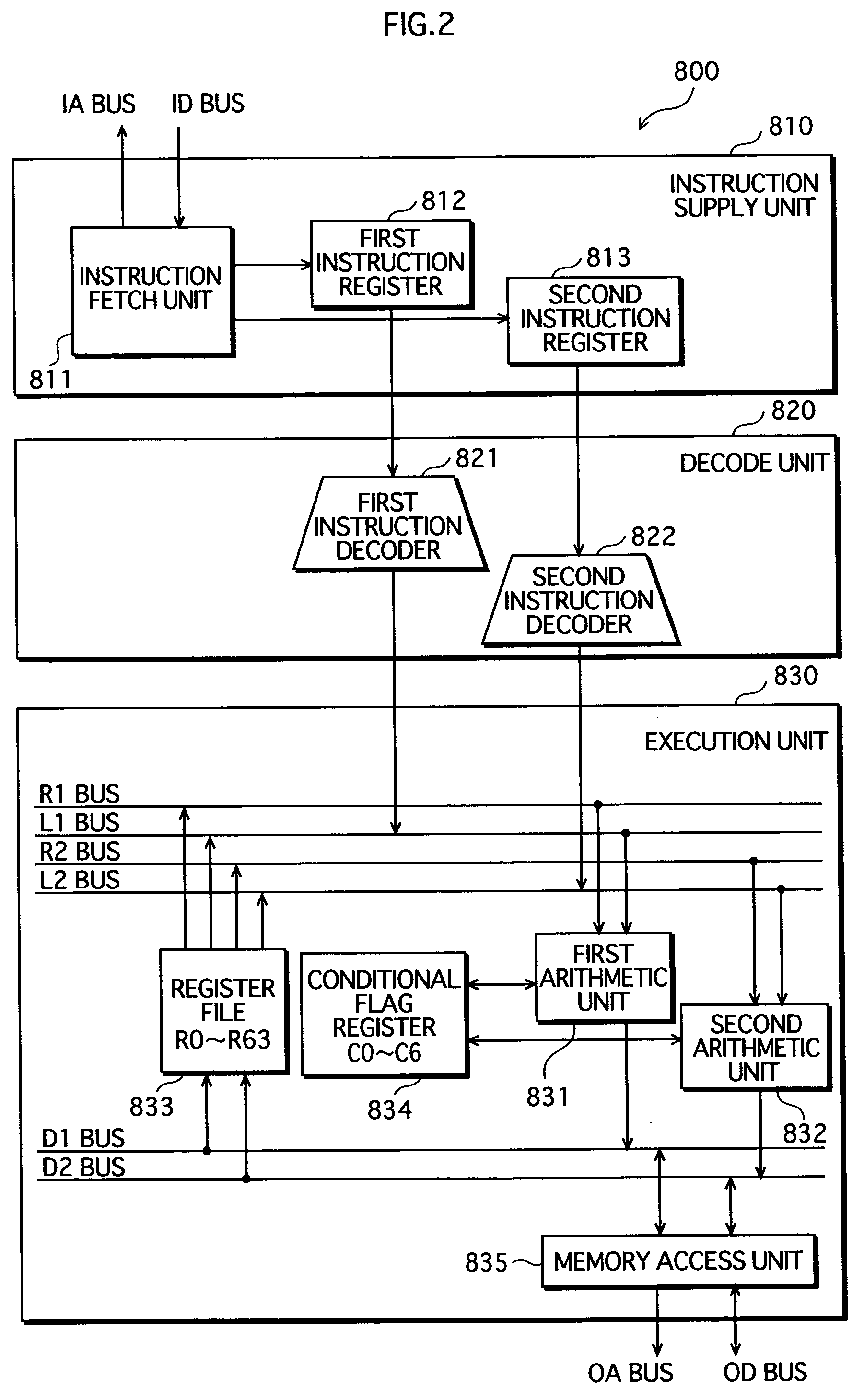Instruction scheduling method, instruction scheduling device, and instruction scheduling program
a scheduling method and instruction technology, applied in the direction of instruments, computing, electric digital data processing, etc., can solve the problems of insufficient optimization of parallel processing programs, inability to place instructions in as few clock cycles, and wrong execution results of programs
- Summary
- Abstract
- Description
- Claims
- Application Information
AI Technical Summary
Problems solved by technology
Method used
Image
Examples
first embodiment
[0111] As described above, when a predecessor and a successor have a dependency with the same precedence constraint rank but cannot be processed in parallel by a hardware resource in a target processor, the instruction scheduling device of the first embodiment sets the priority of the predecessor higher than the precedence constraint rank of the predecessor.
[0112] This makes it possible to find a new critical path generated by resource constraints, which has been overlooked by the conventional technique. The instruction scheduling device places the beginning instruction of the critical path in an earliest clock cycle possible. In this way, a plurality of instructions including instructions that cannot be processed in parallel due to resource constraints can be placed in fewer clock cycles than in the conventional technique.
second embodiment
[0113] An instruction scheduling device of the second embodiment of the present invention receives an input of a plurality of instructions that are subjected to scheduling, and calculates a precedence constraint rank of each instruction. After this, the instruction scheduling device calculates a resource constraint value for each placeable instruction. There source constraint value is obtained by dividing a total number of unplaced instructions which are to be processed by a hardware resource for processing the instruction, by a maximum number of instructions which can be processed in parallel by the hardware resource. The instruction scheduling device sets a higher one of the precedence constraint rank and the resource constraint value, as a priority of the instruction. The instruction scheduling device then selects an instruction having a highest priority, and places the selected instruction in a clock cycle. This is repeated until all instructions are placed in clock cycles.
[0114...
third embodiment
[0170] An instruction scheduling device of the third embodiment of the present invention receives an input of a plurality of instructions that are subjected to scheduling, and calculates a precedence constraint rank of each instruction. After this, the instruction scheduling device repeats the following procedure so as to place the instructions in a desired number of clock cycles.
[0171] The instruction scheduling device selects an instruction having a highest precedence constraint rank from placeable instructions, and places the selected instruction in a clock cycle. The instruction scheduling device then calculates, for each placeable instruction, a number of remaining clock cycles in which the instruction can be placed and a resource constraint value of the instruction. The instruction scheduling device compares the number of remaining clock cycles and the resource constraint value, to judge whether all instructions can be placed in the desired number of clock cycles.
[0172] If the...
PUM
 Login to View More
Login to View More Abstract
Description
Claims
Application Information
 Login to View More
Login to View More - R&D
- Intellectual Property
- Life Sciences
- Materials
- Tech Scout
- Unparalleled Data Quality
- Higher Quality Content
- 60% Fewer Hallucinations
Browse by: Latest US Patents, China's latest patents, Technical Efficacy Thesaurus, Application Domain, Technology Topic, Popular Technical Reports.
© 2025 PatSnap. All rights reserved.Legal|Privacy policy|Modern Slavery Act Transparency Statement|Sitemap|About US| Contact US: help@patsnap.com



